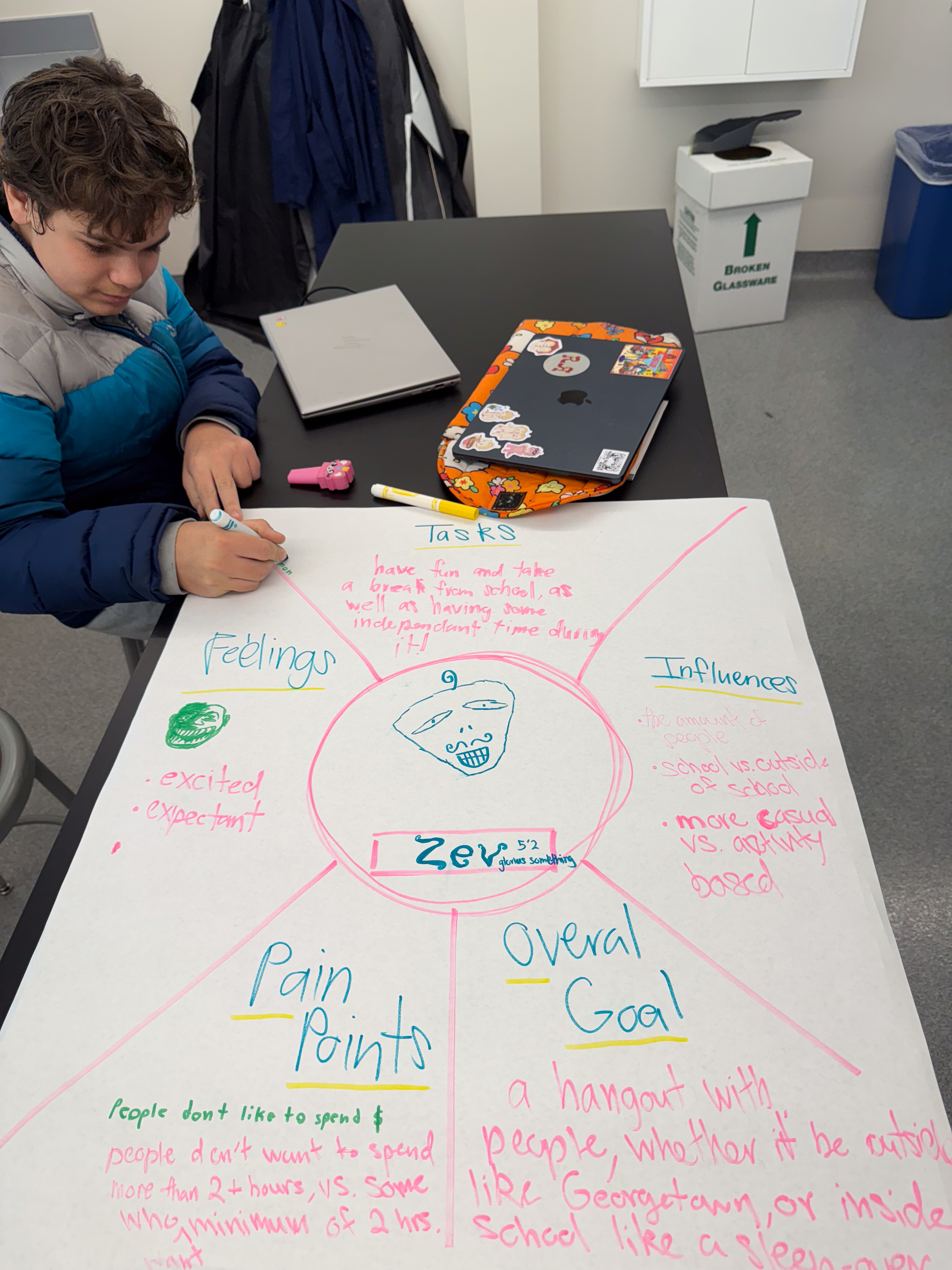
By Sarah Swain, Dean of Innovation/Science
As The Field School Vision for Teaching and Learning states, “Real life is not divided into academic disciplines. By reflecting this reality, we can deepen student learning, and cultivate transferable skills, and make school even more engaging…We will [therefore] encourage interdisciplinary collaboration and co-planning, and foster interdisciplinary learning.” As we introduce more opportunities for project-based fieldwork, we must build students' and faculty's skills to design and create solutions in the real world. A foundational process used worldwide to design solutions is the Design Thinking Method, made famous by IDEO and the Stanford d.school. This year, the Advisory program has implemented a challenge to ensure all students develop a shared understanding and language of the design process. Students will be guided through the Design Thinking Methods to propose an event for their grade that builds meaningful connections with their peers. 
In this sequence of advisory lessons, students will practice empathy, define opportunities, ideate, prototype, and test ideas, culminating in a final pitch to school leadership to secure approval for their event. This process began with a launch event where students participated in a design sprint to develop a hypothetical perfect birthday party for a peer. They learned to empathize with their peers through a series of interview lessons that culminated in an empathy mapping exercise and the development of creative personas. As the lessons progress, students will learn to define the opportunity clearly before designing an event for a particular audience. Advisories will research what creates meaningful connections among teens and ideate many possible events before using decision matrices to identify the best event idea, supported by evidence. Many important lessons will be learned as they prototype the event logistics, including budget, calendar, and chaperone considerations, and test their plans with their peers. The final pitch events will take place the week before Thanksgiving. Advisory teams will present their evenideas to a panel of school leaders to make the case that their event is well-planned and ready to schedule!
We hope the result is not only a series of student-planned events that build meaningful connections within the grade levels, but also a shared practice and familiarity with the language of Design Thinking. Throughout this process, students will hone their skills to create and relate, two of the most valuable skills for their future.
